Luận án Nghiên cứu giải pháp nâng cao hiệu suất sử dụng phân đạm viên nén cho ngô tại Thanh Hóa
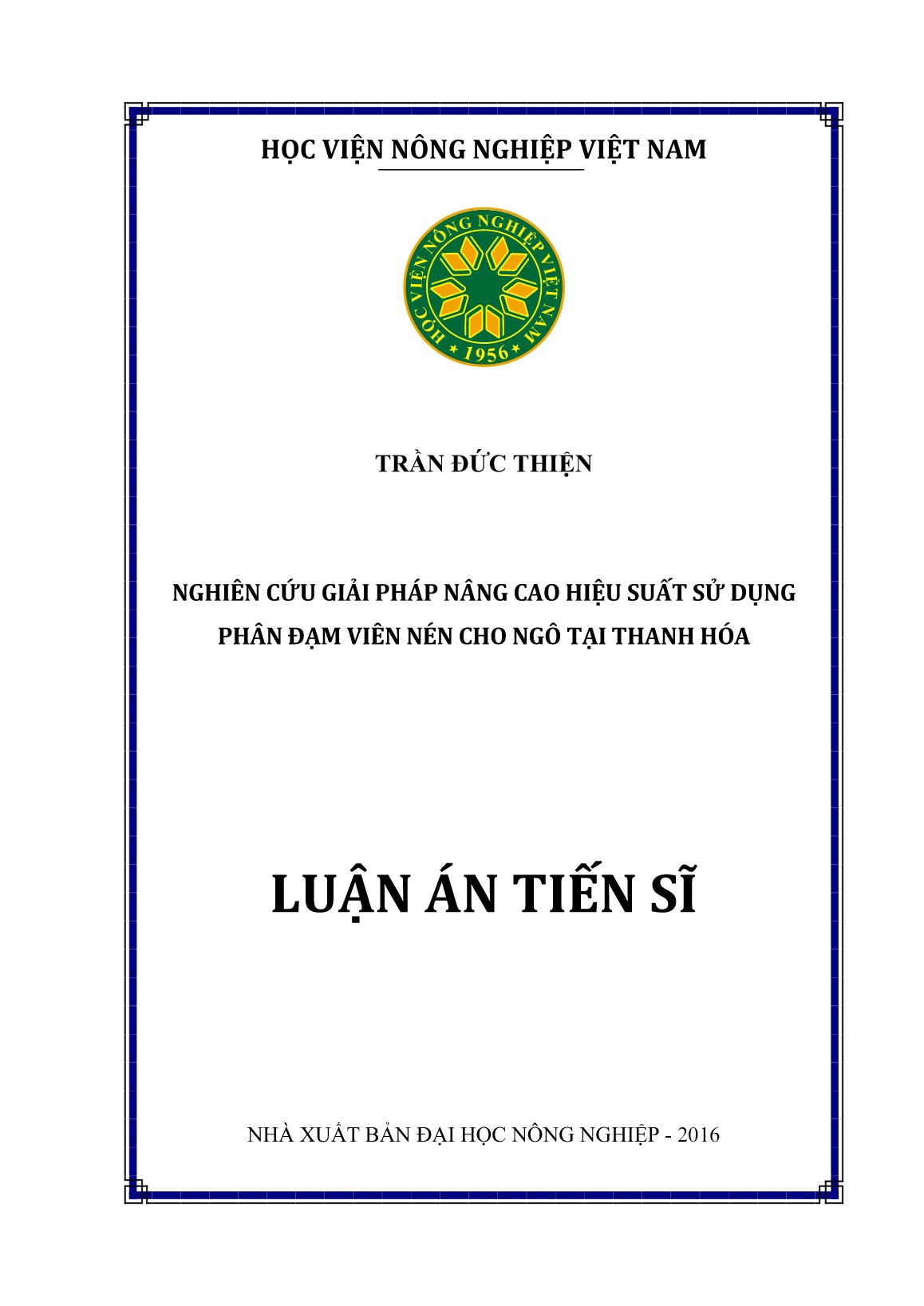
Trang 1
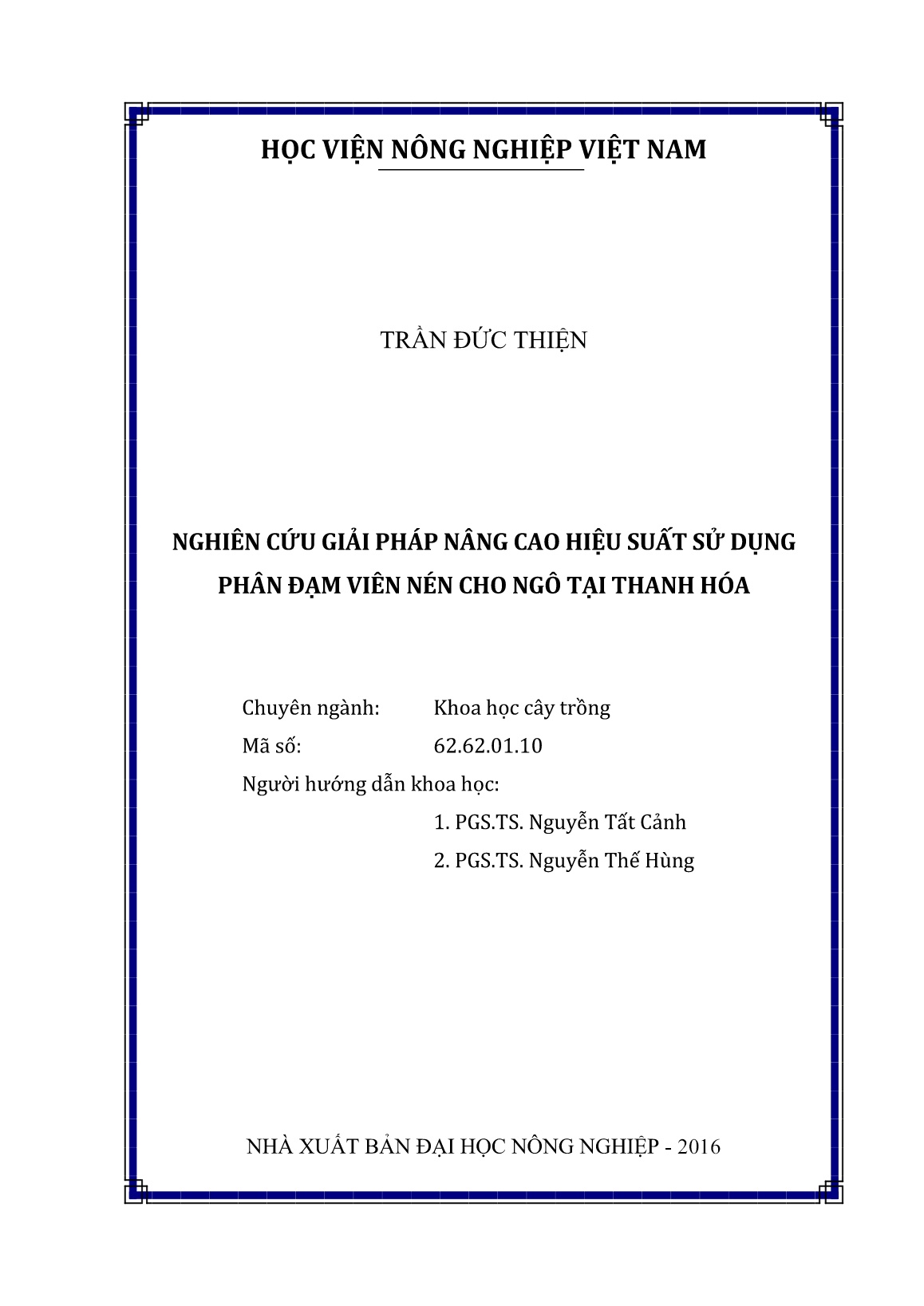
Trang 2
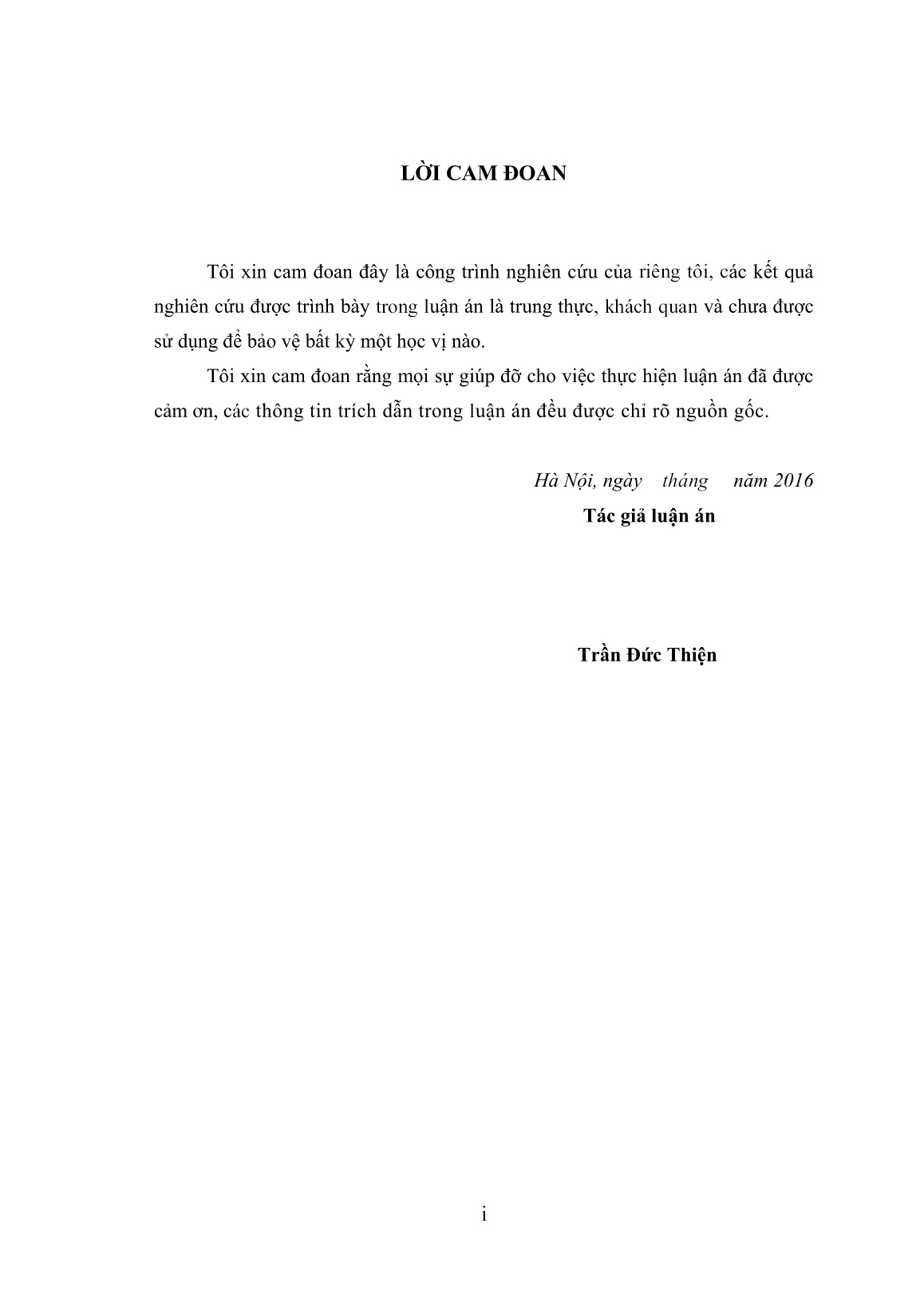
Trang 3
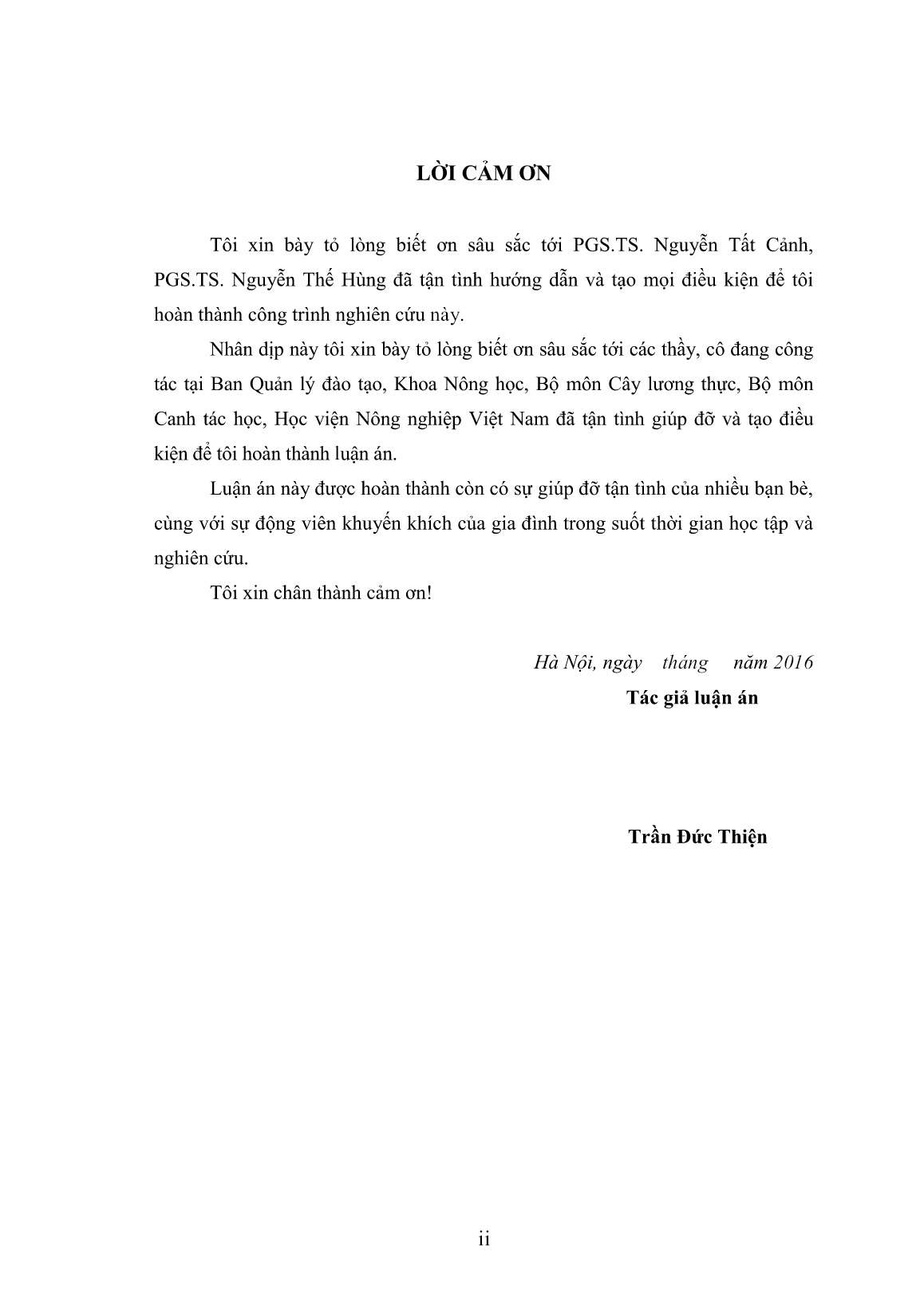
Trang 4
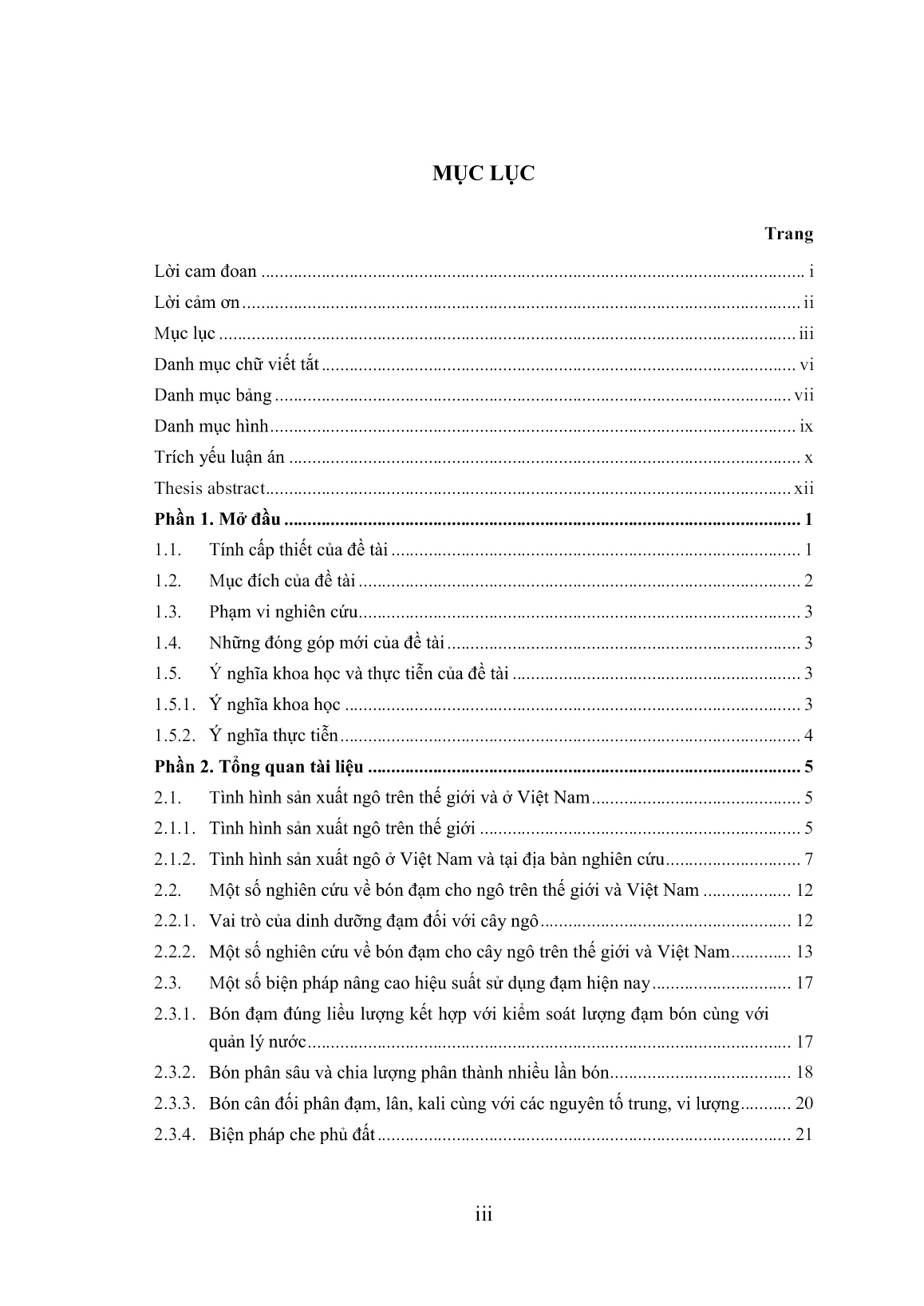
Trang 5
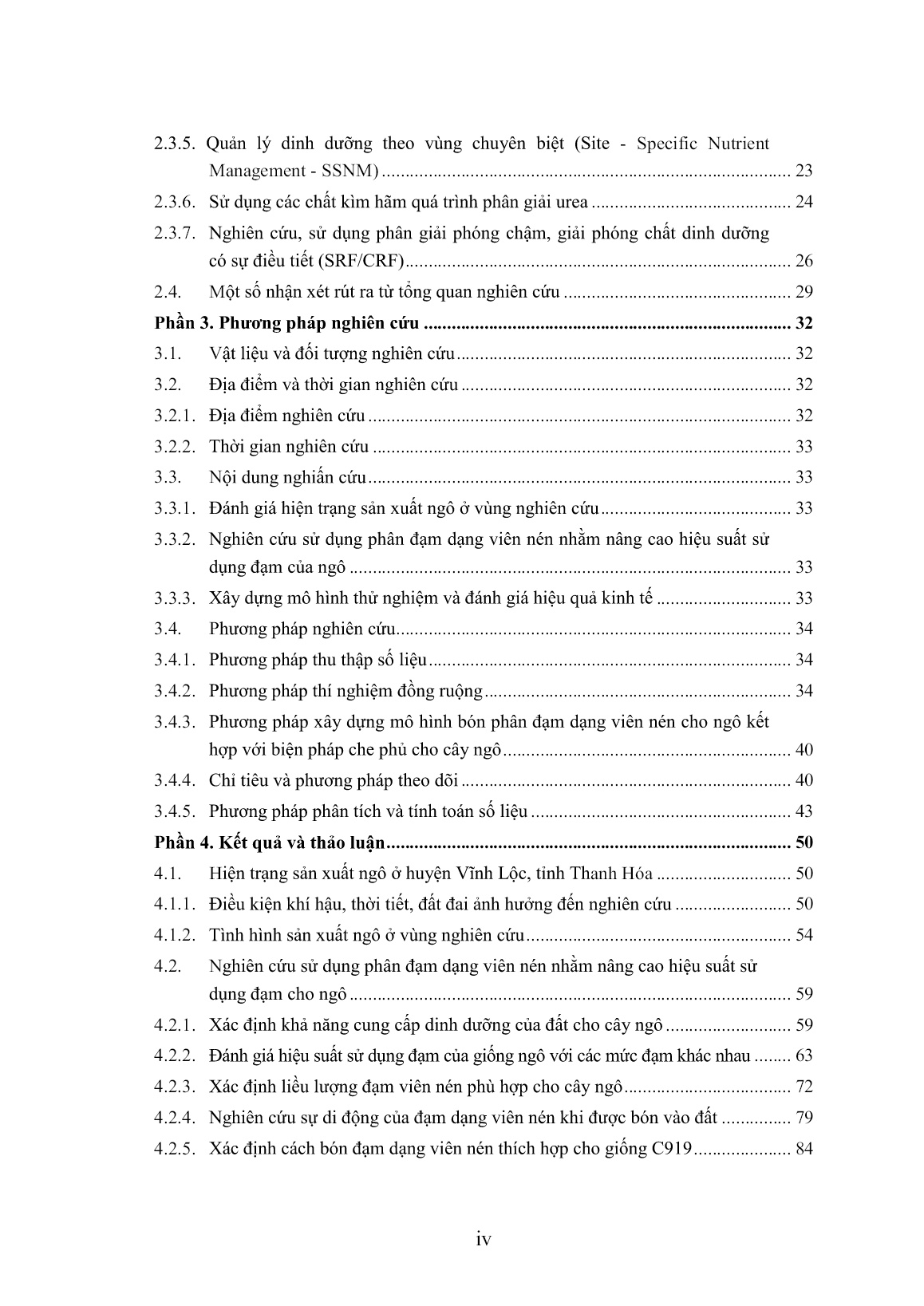
Trang 6
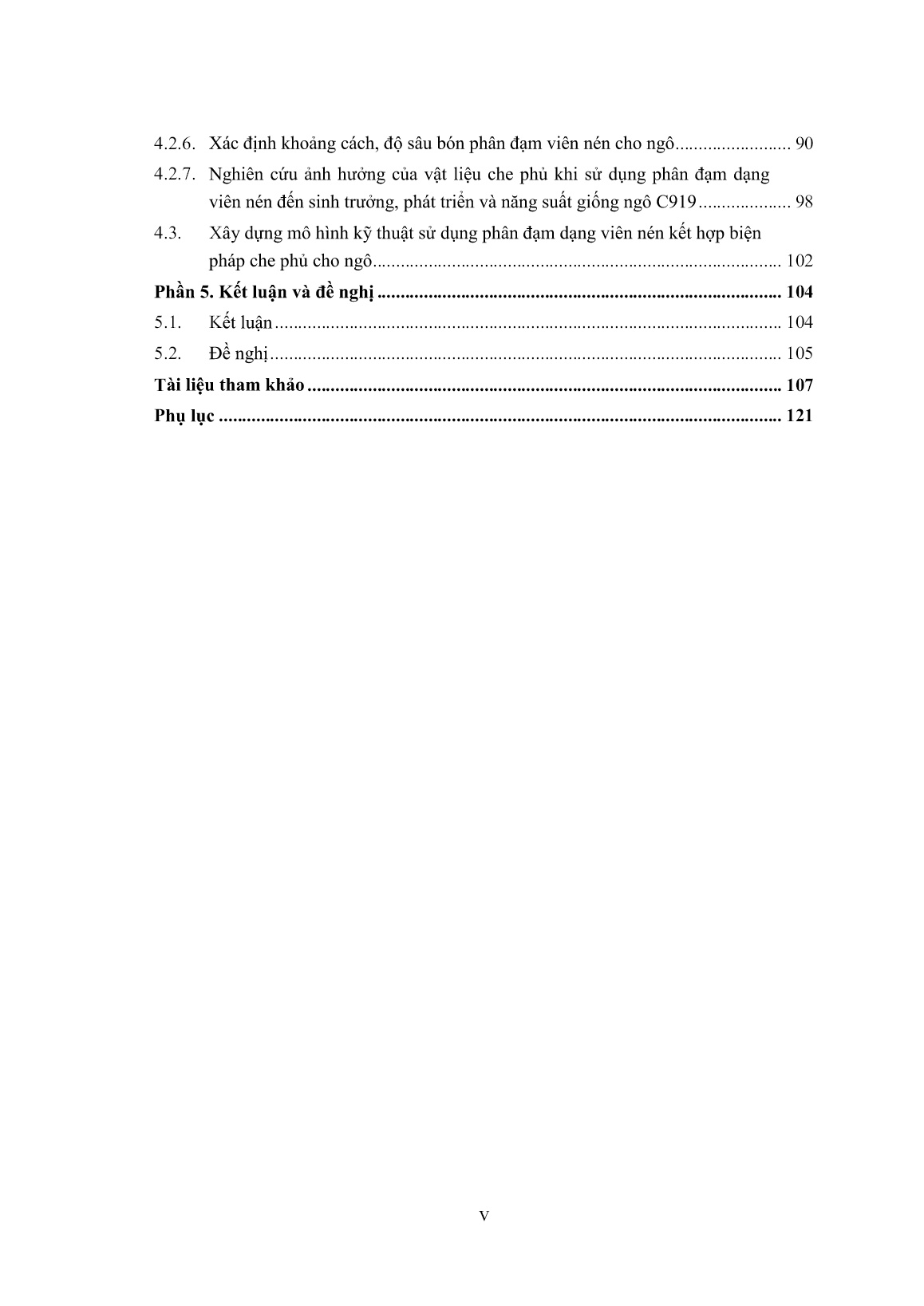
Trang 7
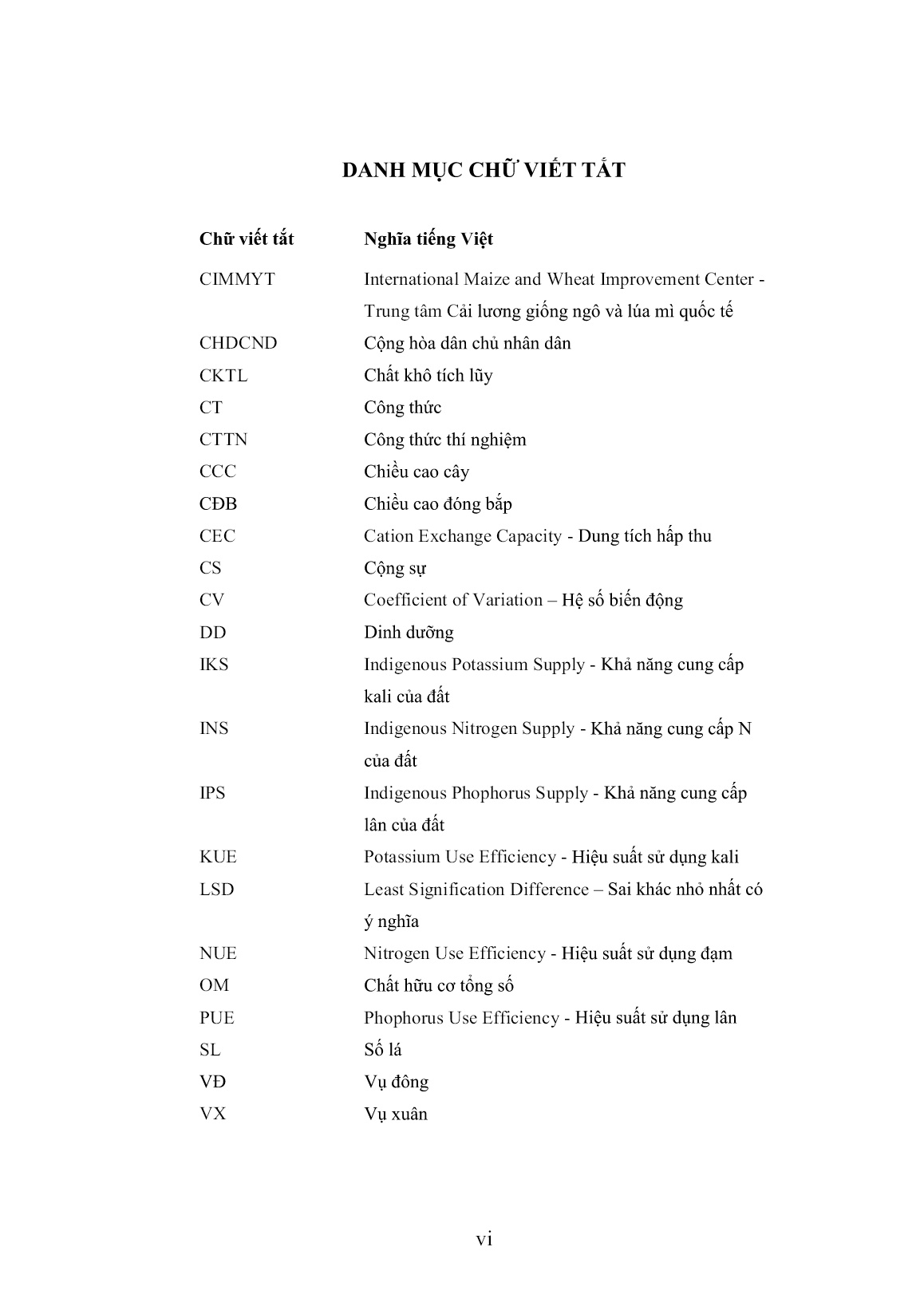
Trang 8
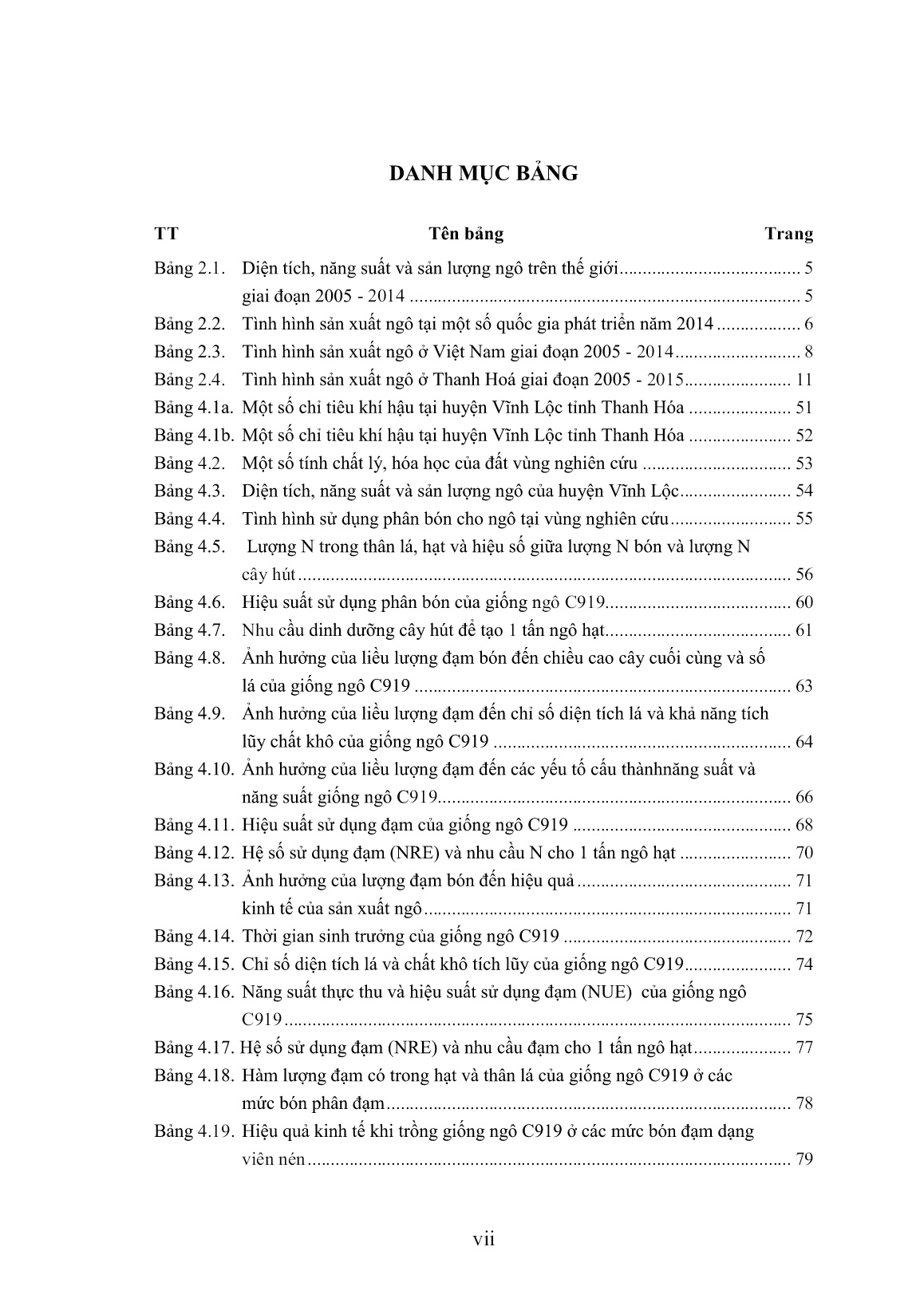
Trang 9
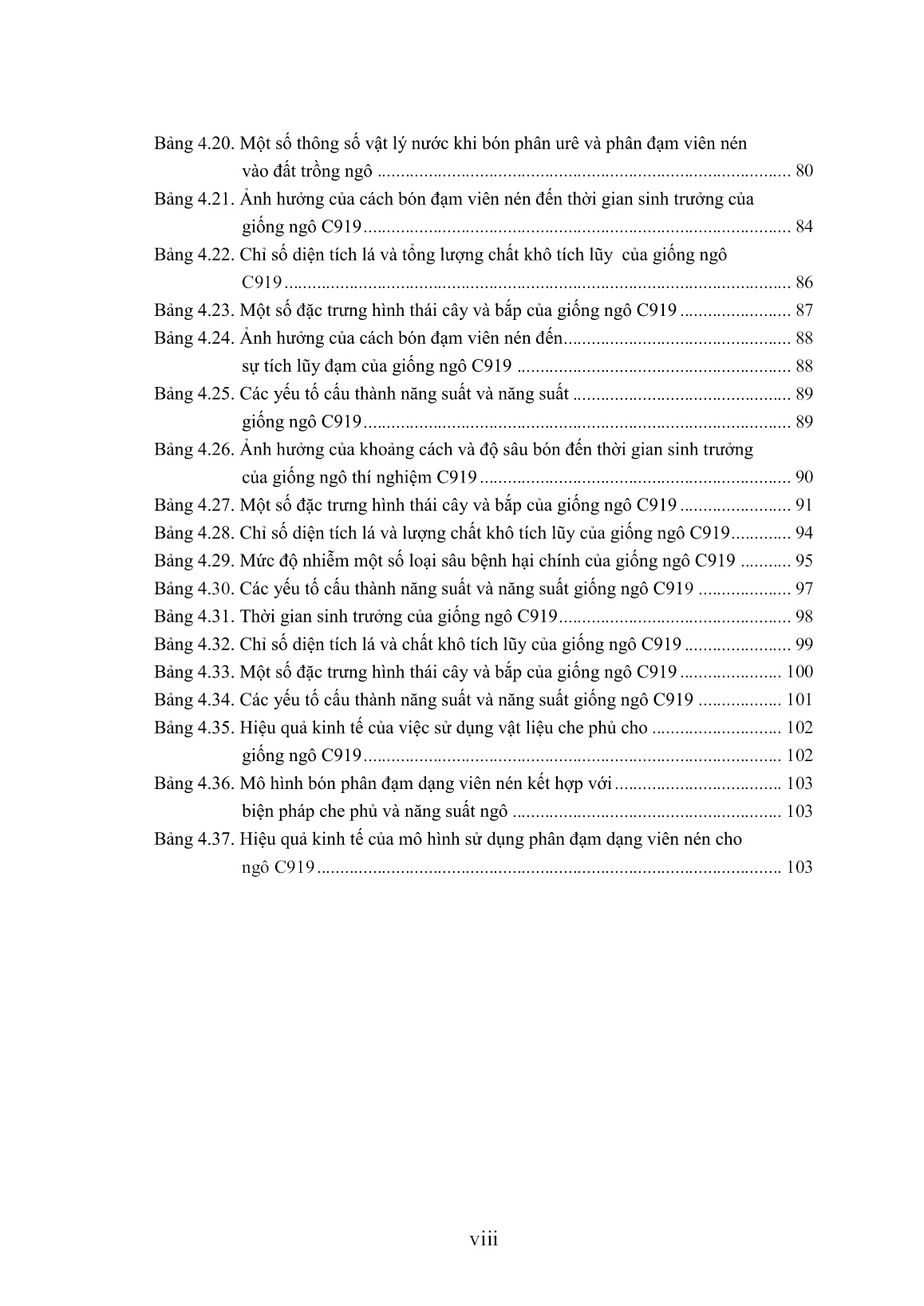
Trang 10
Tải về để xem bản đầy đủ
Bạn đang xem 10 trang mẫu của tài liệu "Luận án Nghiên cứu giải pháp nâng cao hiệu suất sử dụng phân đạm viên nén cho ngô tại Thanh Hóa", để tải tài liệu gốc về máy hãy click vào nút Download ở trên.
Tóm tắt nội dung tài liệu: Luận án Nghiên cứu giải pháp nâng cao hiệu suất sử dụng phân đạm viên nén cho ngô tại Thanh Hóa
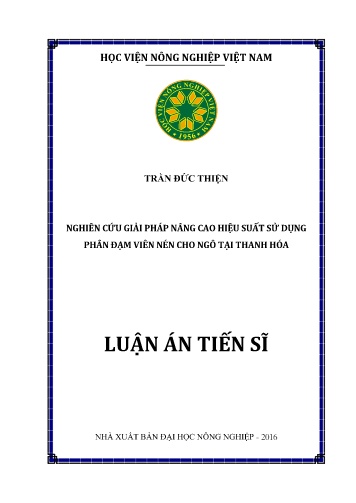
6. 102. Moser S. B., F. Boy, J. Sansern and S. Peter (2006). Effects of pre-anthesis drought, nitrogen fertilizer rate, and variety on grain yield, yield components, and harvest index of tropical maize. Agricultural water management. Vol. 81 (1-2). pp. 41-58. 103. Motavalli P. P., K. W. Goyne and R. P. Udawatta (2008). The environmental impacts of enhanced efficiency nitrogen fertilizers. Crop Management (in review). Plant Management Network. 104. Northern Territory Government (2008). Growing Irrigated Maize in the Northern Territory. 105. Owens L. B. (1981). Effects of nitrapyrin on nitrate movement in soil columns. Journal of Environment Quality. 10. pp. 308-310. 106. Paniagua S. (2006). Use of slow - release N fertilizer to control nitrogen losses due to spatial and climatic differences in soil moisture conditions and drainage in claypan soils. M.S.Thesis. 104 pp. University of Missouri-Columbia. 107. Pasuquin J. M., S. Saenong, P. S. Tan, C. Witt and M. J. Fisher (2012). Evaluating N management strategies for hybrid maize in Southeast Asia. Field Crops Research .134 . pp. 153–157 108. Patrick, L. (2001). Guidelines for Trial in Corn for Hybrids seeds Production. pp. 92; 117. 109. Peng H., Q. Gao, R. Xie, S. Li, Q. Meng, E. A. Kirkby, V. Rưmheld, T. Müller, F. Zhang, Z. Cui and X. Chen (2012). Grain yields in relation to N requirement: Optimizing nitrogen management for spring maize grown in China. Field Crops Research. Vol. 129. pp. 1-6. 110. Peng S. B, F. V Garcia, R. C Laza, A. L Sanico, R. M Visperas and K. G. Cassman (1996). Increased N-use efficiency using a chlorophyll meter on high yielding irrigated rice. Field Crops Research. 47. pp. 243-252. 111. Peng S. B, F. V. Garcia, R. C. Laza and K. G. Cassman (1993). Adjustment for specific leaf weight improves chlorophyll meter’s estimate of rice leaf nitrogen 117 concentration. Agronomy Journal. 85. pp. 987-990. 112. Peng S. B, J. L Huang and X. H Zhong (2002). Challenge and opportunity in improving fertilizer-nitrogen use efficiency of irrigated rice in China. Agric Sci China. Vol. 1 (7). pp. 776-785. 113. Piccini C., C. D. Bene, R. Farina, B. Pennelli and R. Napoli (2016). Assessing Nitrogen Use Efficiency and Nitrogen Loss in a Forage-Based System Using a Modeling Approach. Agronomy 6 (23). 114. Prosdocimi M., P. Tarolli and A. Cerdà (2016a). Mulching practices for reducing soil water erosion: A review. Earth-Science Reviews. 161 (2016). pp. 191-203. 115. Prosdocimi M., P. Tarolli and A. Cerdà (2016b). Soil water erosion on Mediterranean vineyards: A review. Catena. 141. pp. 1-21. 116. Qi X., L. Nie, H. Liu, S. Peng, F. Shah, J. Huang, K. Cui and L. Sun (2012). Grain yield and apparent N recovery efficiency of dry direct-seeded rice under different N treatments aimed to reduce soil ammonia volatilization. Field Crops Research. 134. pp. 138-143. 117. Randall G. and M. Schmitt (2004). Strategies for split N applications in 2004. In: Proceedings of the Wisconsin, Fertilizer, Aglime and Pest Management Conference. Vol. 43. pp. 60-67, Madison, WI, USA. 118. Raun W. R. and V. J. Gordon (1999). Improving Nitrogen Use Efficiency for Cereal Production. Agronomy Journal. Vol. 91 (3). pp. 357-363. 119. Sadeghi S. H. R., L. Gholami, M. Homaee and A. K. Darvishan (2015). Reducing sediment concentration and soil loss using organic and inorganic amendments at plot scale. Soild Earth. 6. pp. 445-455. 120. Savci S. (2012). Investigation of Effect of Chemical Fertilizers on Environment. APCBEE Procedia. 1. pp. 287-292. 121. Setiyono T. D., D. T. Walters, K. G. Cassman, C. Witt and A. Dobermann (2010). Estimating maize nutrient uptake requirements, Field Crops Research. 118. pp. 158-168. 122. Shanahan J. F., N. R. Kitchen, W. R. Raun and J. S. Schepers (2008). Responsive in-season nitrogen management for cereals. Comput. Electron. Agric. 61. pp. 51-62. 118 123. Shaviv A. (2000). Advances in controlled release fertilizers. Advances in Agronomy. 71. pp. 1-49. 124. Sincle T. and R. C. Muchow (1995). Effect of Nitrogent supply om maize Yield, modeling physiological Response. Agronomy Jounal. 87 (4). pp. 632-641. 125. Sitthaphanit S., V. Limpinuntana, B. Toomsan, S. Panchaban and R. W. Bell (2010). Growth and yield responses in maize to split and delayed fertilizer applications on sandy soils under high rainfall regimes. Kasetsart J. (Nat. Sci.). 44. pp. 991-1003. 126. Snyder C. S., T. W. Bruulsema and T. L. Jensen (2008). Greenhouse gas emissions from cropping systems and the infl uence of fertilizer management - a literature review. International Plant Nutrition Institute, Norcross, Georgia, U.S.A. 127. Stewart W. M and W. R. Gordon. (2008). Fertilizing for Irrigated Corn, Guide to best Management Practices. The International Plant Nutrition Institute. 128. Swastika D. K. S., F. Kasim, W. Sudana, R. Hendayana, K. Suhariyanto, R. V. Gerpacio and P.L. Pingali (2004). Maize in Indonesia. Production Systems, Constraints and Priorities For Research. International Maize and Wheat Improvement Center (CIMMYT), Mexico. 129. Tamás G. P., G. Zoltán and L. Günter (2015). Design-support and performance estimation using HYDRUS/CW2D: a horizontal flow constructed wetland for polishing SBR effluent. Water Science & Technology. 71 (7). pp. 965-970. 130. Thanh Ha, D., T. Dinh Thao, N. Tri Khiem, M. Xuan Trieu, R.V. Gerpacio and P. L. Pingali (2004). Maize in Vietnam. Production Systems, Constraints and Research Priori-ties. International Maize and Wheat Improvement Center (CIMMYT), Mexico. 131. Tilman D., K. G. Cassman, P. A. Matson, R. Naylor and S. Polasky (2002). Agricultural sustainability and intensive production practices. Nature. 418. pp. 671-677. 132. Trenkel M. E (1997). Improved Fertilizer Use Effi ciency. Controlled-release and stabilized fertilizers in agriculture. International Fertilizer Industry Association. Paris, France. ( trenkel.pdf). 119 133. Uhart S. A. and F. H. Andrade (1995). Nitrogen deficiency in maize. II. Carbon- nitrogen interaction effects on kernel number and grain yield. Crop Science. 35. pp. 1348-1389. 134. Viero F., B. Cimélio, C. B. V. Renan and C. Eduardo (2015). Management of irrigation and nitrogen fertilizers to reduce ammonia Volatilization. R. Bras. Ci. Solo. 39. pp. 1737-1743. 135. Wang G., M. Hao and D. Chen (2006). Effect on nitrification inhibitor and aeration regulation on soil NO, emission. Plant Nutrition and Fertilizer Science. 12. pp. 32-36. 136. Wang D. J., J. H. Lin, R. J. Sun, L. Z. Xia and G. Lian (2003). Optimum nitrogen rate for a high productive rice-wheat system and its impact on the groundwater in the Taihu Lake area. Acta Pedologica Sinica (in Chinese). 40 (3). pp. 426-432. 137. Wanga S., L. Shasha, L. Xiaosha, Y. Shanchao, S. Yufang and L. Shiqing (2016). Effect of split application of nitrogen on nitrous oxide emissions from plastic mulching maize in the semiarid Loess Plateau. Agriculture, Ecosystems and Environment. 220. pp. 21-27. 138. Wiatrak P. and B. G. Walter (2014). Effect of urea with nutrisphere-N polymer in fall and spring nitrogen application for corn. American Journal of Agricultural and Biological Sciences. 9 (1). pp. 89-93. 139. Xu Q. X., T. W., Wang, C. F., Cai, Z. X., Li and Z. H., Shi (2012). Effects of soil conservation on soil properties of citrus orchards in the Three-Gorges Area, China. Land Degrad. Dev. 23. pp. 34-42. 140. Xu X., P., He, M. F., Pampolino, A. M., Johnston, S., Qiu, S., Zhao, L., Chan and W., Zhou (2014). Fertilizer recommendation for maize in China based on yield response and agronomic efficiency. Field Crops Research. 157. pp. 27-34. 141. Yan X., J. Y. Jin, P. He and M. Liang (2008). Recent Advances on the Technologies to Increase Fertilizer Use Efficiency. Agricultural Sciences in China, Beijing. Vol. 7 (4). pp. 469-479. 142. Yu G. H. and Y. Z. Zhang (2006). Yield and nutrition qualities of pakchoi as affected by three types of nitrification inhibitors. Chinese Journal of Soil Science. 37. pp. 737-740. 120 143. Zhai J. H, Y. J Gao and J. B Zhou (2002). The review of controlled/ slow release fertilizer. Agricultural Research in the Arid Areas. 20. pp. 45-48. 144. Zhang F. S, R. F Jiang, X. D Yang and W. F Zhang (2005). Questions and countermeasures in the development of controlledfslow release fertilizer. Agrochemical Science & Technology. 10. pp. 51-52. 145. Zhang S. L., Y. A. Tong, D. L. Liang, D. Q. Lu and O. Emteryd (2004a). Nitrate-N movement in the soil profile as influenced by rate and timing of nitrogen application. Acta Pedologica Sinica (in Chinese). Vol. 41 (2). pp. 270-277. 146. Zhang S. X., X. Y. Li, X. P. Li, F. M. Yuan, Z. H. Yao, Y. L. Sun and F. D. Zhang (2004b). Crop yield, N uptake and nitrates in a fluvc-aquic soil profile. Pedosphere. Vol. 14 (1). pp. 131-136. 147. Zhang Y. M., C. S. Hu, J. B. Zhang, D. L. Chen and X. X. Li (2005). Nitrate leaching in an irrigated wheat-maize rotation field in the North China Plain. Pedosphere. Vol. 15 (2). pp. 196-203. 148. Zhu L., J. Liu, S. Luo, L. Bu, X. Chen and S. Li (2015). Soil mulching can mitigate soil water deficiency impacts on rainfed maize production in semiarid environments. ScienceDirect, Journal of Integrative Agriculture. 14(1). pp. 58-66. 149. Zhu Z. (2003). Rational use of inorganic and organic fertilizers and development of environment friendly fertilization system. J Chin Acad Sci. 18. pp. 89-91. 150. Zou H., L. Yao, D. Xiuli, Y. Na, Z. YuLing, L. Z. Yu and D. Jianghui (2015). Solubility Characteristics and Slow-Release Mechanism of Nitrogen from Organic-Inorganic Compound Coated Urea. Hindawi Publishing Corporation International Journal of Photoenergy Volume 2015, Article ID 705471. 121 PHỤ LỤC PHỤ LỤC 1: PHIẾU ĐIỀU TRA NƠNG HỘ Ngày điều tra: ngày........tháng........năm......................... Địa điểm điều tra: thơn.....................xã............................huyện................... Người điều tra: ............................................................................................... PHẦN I: THƠNG TIN CHUNG A. THƠNG TIN VỀ HỘ GIA ĐÌNH 1. Họ tên chủ hộ: ............................................(Nam, nữ)............................... 2. Dân tộc: ...................... Số điện thoại: ........................................................ 3. Xếp loại kinh tế gia đình: Khá □ Trung bình □ Cận nghèo □ Nghèo □ 4. Họ và tên người được phỏng vấn:.. (Nam, nữ)....... Quan hệ với chủ hộ: B. TÀI SẢN, NGUỒN LỰC 1. Nhân khẩu, lao động: Số nhân khẩu: STT Họ tên Tuổi Quan hệ với chủ hộ Trình độ học vấn Nghề chính Nghề phụ 1 2 3 4 5 2. Đất đai Hạng mục Diện tích (m2) Sản lượng (tạ) Tổng đất canh tác Đất lúa nước Đất lúa cạn Đất trồng cây lâu năm Đất trồng ngơ Đất sản xuất nơng nghiệp khác PHẦN II: TÌNH HÌNH SẢN XUẤT NGƠ 1. Sử dụng giống ngơ Tên giống Loại (ngơ tẻ, nếp, ĐP) Nguồn gốc Diện tích từng giống (m2) Lượng giống sử dụng (kg/500m2) Giá giống (đồng/kg) 122 2. Sử dụng phân bĩn: Giống Loại phân Lượng bĩn (kg/500m2) Số lần bĩn Cách bĩn 3. Mật độ trồng Giống Mật độ/khoảng cách Phương thức trồng (gieo vãi, chọc lỗ) TG gieo (tháng) TG thu (tháng) 4. Phịng trừ sâu bệnh, cỏ dại Loại sâu, bệnh, cỏ dại Phịng trừ (cĩ, khơng) Loại thuốc trừ Số lần phun, làm cỏ Thời gian phun 5. Chăm sĩc, tưới nước:................................................................................ ......................................................................................................................... ........................................................................................................................ 6. Thu hoạch, bảo quản: ......................................................................................................................... ........................................................................................................................ 7. Năng suất, sản lượng: Tên giống Diện tích (ha) Mùa vụ Năng suất (tấn/ha) Sản lượng (tạ) 123 8. Chi phí cho sản xuất ngơ Hạng mục ĐVT Lượng dùng (cho 500m2) Đơn giá (1000đ) Thành tiền (1000đ) 1. Giống Kg 2. Phân bĩn Kg - Đạm Kg - NPK Kg - Lân Kg - Kali Kg - Hữu cơ Kg - Vơi Kg 3. Thuốc BVTV 1000đ 4. Thủy lợi phí 1000đ Bơm nước tưới 1000đ 5. Thuốc trừ cỏ 1000đ 6. Cơng lao động Cơng 7. Chi phí khác 1000đ Tổng 9. Kỹ thuật sử dụng phân bĩn cho ngơ của gia đình: ......................................................................................................................... ......................................................................................................................... ......................................................................................................................... 10. Một số câu hỏi khác: - Những giống nào được gia đình sử dụng nhất? Vì sao? ......................................................................................................................... ......................................................................................................................... - Những khĩ khăn khi trồng ngơ? (giống, thời tiết, vốn, đất, kỹ thuật trồng, sâu bệnh, giá bán thấp, thị trường tiêu thụ,...) ......................................................................................................................... ......................................................................................................................... ......................................................................................................................... - Nguồn lượng thực chính của gia đình là gì?: ......................................................................................................................... ......................................................................................................................... ......................................................................................................................... - Lượng ngơ thu hoạch được gia đình chủ yếu sử dụng vào mục đích gì? Lương thực □ Bán □ Chăn nuơi □ Chế biến khác □ HỘ GIA ĐÌNH NGƯỜI ĐIỀU TRA 124 PHỤ LỤC 2: DIỆN TÍCH, NĂNG SUẤT NGƠ CỦA CÁC HỘ THAM GIA MƠ HÌNH VỤ ĐƠNG NĂM 2013 Stt Họ và tên Diện tích (m2) Năng suất (tạ/ha) I. Các hộ sản xuất theo quy trình sử dụng đạm dạng viên nén 1 Lê Thị Thấn 610 75,3 2 Lê Đình Vân 505 81,2 3 Trịnh Thị Bốc 290 75,6 4 Lê Thị Vữ 321 78,2 5 Hồng Thị Đảng 1234 80,9 6 Vũ Văn Tiến 506 76,3 7 Lê Thị Luân 325 74,6 8 Trịnh Thế Dũng 1315 74,1 9 Nguyễn Thị Dậu 561 70,2 10 Trịnh Thế Cường 1078 80,1 11 Lê Thị Luân(L) 1205 74,1 12 Nguyễn Văn Minh 1120 76,8 13 Trịnh Thị Xuyên 315 76,5 14 Lê Thị Huế 451 74,5 15 Trịnh Dục 320 76,3 16 Trịnh Đơ 270 74,5 17 Trịnh Bốn 516 76,1 18 Lê Thị Mai 345 75,7 19 Lê Thị Chính 506 78,1 20 Lê Thị Chơn 524 74,2 Tổng/bình quân 12317 76,4 II. Các hộ sản xuất ngơ theo quy trình thơng thường 1 Đỗ Thị Hà 576 65,9 2 Hồng Đình Binh 420 68,7 3 Lê Thị Thuần 573 61,2 4 Lê Thị Hoa 528 69,5 5 Trịnh Thị Tuyết 620 71,2 Tổng/bình quân 2717 67,3 125 PHỤ LỤC 3: MỘT SỐ HÌNH ẢNH THÍ NGHIỆM CỦA ĐỀ TÀI Ảnh 1. Các cơng thức thí nghiệm ở giai đoạn trỗ cờ. Ảnh 2. Cơng thức bĩn đạm dạng viên nén (120 kg N/ha) vụ xuân 2012 126 Ảnh 3. Cơng thức bĩn đạm dạng viên nén (210 kgN/ha) vụ đơng 2011 Ảnh 4. Cơng thức bĩn phân cách hạt ngơ 10 cm; ở độ sâu 10 cm - vụ xuân năm 2013 127 Ảnh 5. Mơ hình sử dụng phân đạm dạng viên nén kết hợp che phủ bằng rơm rạ 128 PHỤ LỤC 4: MỘT SỐ KẾT QUẢ XỬ LÝ THỐNG KÊ SINH HỌC 1. Thí nghiệm 1: 1.1. KẾT QUẢ XỬ LÝ THỐNG KÊ VỤ ĐƠNG NĂM 2010 BALANCED ANOVA FOR VARIATE NSTT FILE NSTTD1 28/ 6/15 10:35 ------------------------------------------------------------------ :PAGE 1 Xac dinh kha nang cung cap cua dat D2010 VARIATE V003 NSTT LN SOURCE OF VARIATION DF SUMS OF MEAN F RATIO PROB ER SQUARES SQUARES LN ============================================================================= 1 LN$ 2 225222. 112611. 8.64 0.010 3 2 CT$ 4 .370283E+08 .925709E+07 710.19 0.000 3 * RESIDUAL 8 104277. 13034.6 ----------------------------------------------------------------------------- * TOTAL (CORRECTED) 14 .373578E+08 .266842E+07 ----------------------------------------------------------------------------- TABLE OF MEANS FOR FACTORIAL EFFECTS FILE NSTTD1 28/ 6/15 10:35 ------------------------------------------------------------------ :PAGE 2 Xac dinh kha nang cung cap cua dat D2010 MEANS FOR EFFECT LN$ ------------------------------------------------------------------------------- LN$ NOS NSTT 1 5 4850.81 2 5 5107.61 3 5 4844.65 SE(N= 5) 51.0580 5%LSD 8DF 166.495 ------------------------------------------------------------------------------- MEANS FOR EFFECT CT$ ------------------------------------------------------------------------------- CT$ NOS NSTT CT1 3 2250.50 CT2 3 6850.30 CT3 3 4270.00 CT4 3 5620.80 CT5 3 5680.20 SE(N= 3) 65.9156 5%LSD 8DF 214.944 ------------------------------------------------------------------------------- ANALYSIS OF VARIANCE SUMMARY TABLE FILE NSTTD1 28/ 6/15 10:35 ------------------------------------------------------------------ :PAGE 3 Xac dinh kha nang cung cap cua dat D2010 F-PROBABLIITY VALUES FOR EACH EFFECT IN THE MODEL. SECTION - 1 VARIATE GRAND MEAN STANDARD DEVIATION C OF V |LN$ |CT$ | (N= 15) -------------------- SD/MEAN | | | NO. BASED ON BASED ON % | | | OBS. TOTAL SS RESID SS | | | NSTT 15 4934.4 1633.5 114.17 2.3 0.0103 0.0000 BALANCED ANOVA FOR VARIATE TLCK FILE TLCKD1 28/ 3/16 17:18 ------------------------------------------------------------------ :PAGE 1 Xac dinh kha nang cung cap dinh duong cua dat D2010 VARIATE V003 TLCK LN SOURCE OF VARIATION DF SUMS OF MEAN F RATIO PROB ER SQUARES SQUARES LN ============================================================================= 1 LN$ 2 286278. 143139. 1.08 0.385 3 2 CT$ 4 .137007E+09 .342516E+08 259.02 0.000 3 * RESIDUAL 8 .105787E+07 132233. ----------------------------------------------------------------------------- * TOTAL (CORRECTED) 14 .138351E+09 .988219E+07 ----------------------------------------------------------------------------- TABLE OF MEANS FOR FACTORIAL EFFECTS FILE TLCKD1 28/ 3/16 17:18 ------------------------------------------------------------------ :PAGE 2 129 Xac dinh kha nang cung cap dinh duong cua dat D2010 MEANS FOR EFFECT LN$ ------------------------------------------------------------------------------- LN$ NOS TLCK 1 5 9770.63 2 5 9440.09 3 5 9668.13 SE(N= 5) 162.624 5%LSD 8DF 530.301 ------------------------------------------------------------------------------- MEANS FOR EFFECT CT$ ------------------------------------------------------------------------------- CT$ NOS TLCK CT1 3 4350.00 CT2 3 13250.5 CT3 3 8590.00 CT4 3 10910.1 CT5 3 11030.8 SE(N= 3) 209.947 5%LSD 8DF 684.616 ------------------------------------------------------------------------------- ANALYSIS OF VARIANCE SUMMARY TABLE FILE TLCKD1 28/ 3/16 17:18 ------------------------------------------------------------------ :PAGE 3 Xac dinh kha nang cung cap dinh duong cua dat D2010 F-PROBABLIITY VALUES FOR EACH EFFECT IN THE MODEL. SECTION - 1 VARIATE GRAND MEAN STANDARD DEVIATION C OF V |LN$ |CT$ | (N= 15) -----------------
File đính kèm:
 luan_an_nghien_cuu_giai_phap_nang_cao_hieu_suat_su_dung_phan.pdf
luan_an_nghien_cuu_giai_phap_nang_cao_hieu_suat_su_dung_phan.pdf KHCT - TTLA - Tran Duc Thien.pdf
KHCT - TTLA - Tran Duc Thien.pdf TTT - Tran Duc Thien.pdf
TTT - Tran Duc Thien.pdf

